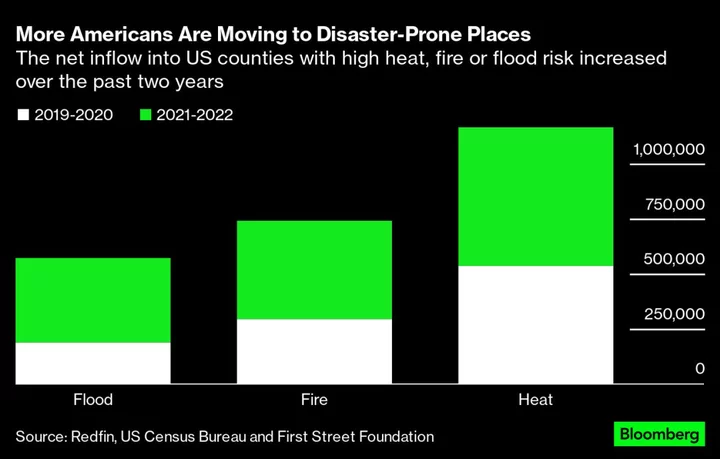
Ancient Mayan city discovered in remote jungle that was previously 'impossible' to find
It feels like every day there’s a science story that comes along ready to blow our tiny minds, and today is no exception. A series of ancient interconnected cities have been discovered in the remote El Mirador jungle Guatemala, and it’s changing our entire understanding of the ancient civilisation. More than 400 settlements have been uncovered with some dating back as far as 1,000 BC. They’re linked by roads too, and it’s led them to be described as “the first freeway system in the world”. Sign up to our free Indy100 weekly newsletter Richard Hansen, a research professor at the University of Idaho, is an expert on the project and he’d called the findings a “game-changer”. It was previously thought that the Mayan peoples were nomadic, but these cities have changed the scientific community’s understanding. Speaking to the Washington Post, Hansen said: "We now know that the Preclassic period was one of extraordinary complexity and architectural sophistication, with some of the largest buildings in world history being constructed during this time.” On top of the 110 miles of interconnected roads, the discoveries also showed evidence of organised agriculture and even hydraulic systems. The findings are the result of work which first began in 2015, which saw lidar technology uncovered signs of ancient structures below the surface. Archaeologist Enrique Hernández, from San Carlos University said about the findings: “Now there are more than 900 [settlements]… We [couldn’t] see that before. It was impossible,” he said. Have your say in our news democracy. Click the upvote icon at the top of the page to help raise this article through the indy100 rankings.
2023-05-24 00:29

Get a refurbished Lenovo ThinkCentre Tiny for just $190
TL;DR: As of August 11, get a refurbished Lenovo ThinkCentre M900 Tiny computer for just
2023-08-11 17:52

Huawei’s Stealth Phone Launch Energizes Chinese Chip Stocks
Chinese technology shares surged Wednesday after Huawei Technologies Co. surprised investors by debuting a 6,999 yuan ($960) smartphone,
2023-08-30 12:58

India’s June Heat Wave Deaths Are a Harbinger of Worse to Come
At a cremation ground on the banks of the Ganges river in Ballia, a district in the northern
2023-06-27 11:59

The cherry emoji and 14 other emoji you can use to sext
Sexting with emoji doesn't just make you thirsty. It can make you hungry too. Between
2023-06-29 08:57

Perfect Corp. and Paramount Launch Teenage Mutant Ninja Turtles: Mutant Mayhem Interactive AR Movie Experience
NEW YORK--(BUSINESS WIRE)--Aug 2, 2023--
2023-08-02 18:47

Diablo IV Will Eventually Support DirectStorage for Faster Load Times
We’re still waiting for the PC game industry to widely adopt DirectStorage, Microsoft’s solution for
2023-06-24 01:16

Did IShowSpeed meet Neymar? Streamer's hilarious encounter with PSG superstar goes viral, fans say 'Messi next'
During match in Osaka, Japan, popular YouTuber IShowSpeed aka Darren Watkins meets PSG superstar Neymar and they also collaborate on a TikTok video
2023-07-26 17:49

The best wireless charger for all your devices
In a few years' time, fumbling around with messy cords and plugging your device into
2023-06-29 18:20

Brinqa Appoints Gopal Nagarajan as Chief Customer Officer
AUSTIN, Texas--(BUSINESS WIRE)--Aug 3, 2023--
2023-08-03 23:24

Quectel Announces SC696S LTE Cat 4 Smart Module Series Targeting Applications Requiring High Data Rates and Rich Multimedia Functions
VANCOUVER, British Columbia--(BUSINESS WIRE)--Jul 27, 2023--
2023-07-27 17:15

MrBeast appears to mock Elon Musk with Tesla giveaway
MrBeast, besides being the most followed creator on YouTube, has now added a further accolade to his social media resume by becoming the most followed person on Threads in a staggeringly quick time as well as taking a swipe at Elon Musk in the process. Jimmy ‘MrBeast’ Donaldson, quickly amassed more than one million followers (2.8 million at the time of writing) on the new social media app created by Mark Zuckerberg's Meta, which was launched late on July 5th. Donaldson actually has more followers than Zuckerberg who still has an impressive 2 million followers to his name. However, Donaldson was the first person on the platform to reach one million therefore the record will always stand with him. Much of this record will be down to how easy it is for Instagram users to sign up for Threads which also allows users to easily follow everyone that they already followed on Instagram. Sign up to our free Indy100 weekly newsletter MrBeast, for instance, has 38.6 million followers on Instagram so expect his Threads followers total to grow and grow in the next few days. His first Thread on the platform read: "Sooooo, how long until we're also addicted to this app? Lol." He did though appear to take a thinly veiled dig at Twitter owner Elon Musk. In one post the 25-year-old wrote: "To celebrate Threads launching, I'm gonna give this Tesla to a random follower in 48 hours. Rethread so people are aware." Donaldson then posted a picture of himself next to the Tesla in question which had a huge Threads logo on the bonnet. For those that aren't aware, Elon Musk also owns Tesla and might not be too happy about seeing a rivals logo on one of his cars. There doesn't appear to be any bad blood between Musk and Donaldson as the two have previously teased a collaboration on Twitter. However, the YouTuber has also teased working with Amazon owner Jeff Bezos so he's clearly keeping the billionaires of the world close to him. Have your say in our news democracy. Click the upvote icon at the top of the page to help raise this article through the indy100 rankings.
2023-07-07 21:20
You Might Like...

Fortnite Chapter 4 Season 4 Battle Pass Skins Leaked

Bluey: The Video Game Characters

ChatGPT dragged to US court over AI copyright

HP Omen 16 (2023, 13th Gen Core) Review

Avnos Inc. Secures Funding and Strategic Partnerships From ConocoPhillips, JetBlue Ventures and Shell Ventures, Totaling Over $80M

Americans Are Moving Toward Climate Danger in Search of Cheaper Homes

Jack Dorsey calls for ‘open internet’ as Musk imposes new reading limits on Twitter

Lenovo ThinkVision P32p-30 Review
